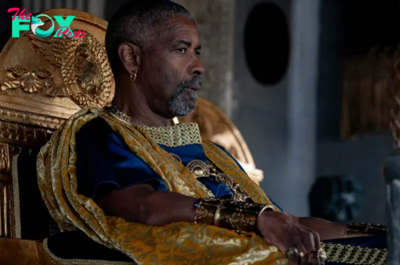Entertainment
How Pok├®mon Conquered America
The following feature is excerpted from TIME Pok├®mon: The Games. The Shows. The Evolution.
It was a particularly hot day in Topeka, Kans., on Aug. 27, 1998. Temperatures reached a sweltering 97 degrees, making it one of the most scorching days that month. For the 2,500 lucky kids gathered in the city, it was about to start rainingŌĆöraining Pikachu, that is. That afternoon, 700 stuffed Pikachu were dropped from the air, along with 10 skydivers who landed and then raced away in yellow Pikachu-themed Volkswagen New Beetles, each painted yellow, with two pointy ears fixed to the roof and a lightning-bolt tail on the back.
The Pok├®-themed bonanza was a month before the Pok├®mon animeŌĆÖs North American debut and celebrated the arrival of the games (which were already wildly popular in Japan) in the U.S. ŌĆ£Pok├®mon ŌĆśPretty Neat,ŌĆÖŌĆØ read the front page of the Topeka Capital Journal, alongside a picture of a 7-year-old hugging a gigantic Pikachu plush. Nintendo chose Topeka because it was in the
center of the country. As part of the event, the city officially renamed itself ŌĆ£ToPikachuŌĆØ for the day. ŌĆ£They came. They saw. They sold,ŌĆØ continued the newspaper article, noting the display of energy for nabbing merchandise for a franchise that hadnŌĆÖt technically been introduced en masse yet.
That hot August day might have marked Pok├®mon coming to America, but the story of Pikachu and friends had begun years earlier, with a young Japanese boy who loved arcade games and bug collecting. Satoshi Tajiri was raised by his parents, a Nissan salesman and a housewife, in the Tokyo suburb of Machida in the late 1960s. This was before the cityŌĆÖs development into a metropolis, although concrete and scaffolding were steadily creeping outward. As a young boy, Tajiri spent his time in fields, ponds, and forests collecting insects and other tiny creaturesŌĆöa popular hobby for kids in Japan. He was so enthusiastic that his friends nicknamed him ŌĆ£Dr. Bug.ŌĆØ
ŌĆ£As a child, I wanted to be an entomologist. Insects fascinated me,ŌĆØ Tajiri told TIME in 1999. ŌĆ£Every new insect was a wonderful mystery. And as I searched for more, I would find more. If I put my hand in a river, I would get a crayfish. Put a stick underwater and make a hole, look for bubbles, and there were more creatures.ŌĆØ
These critters provided inspiration for ŌĆ£BugŌĆØ- type Pok├®mon, a frequent presence in early Pok├®mon games, lurking in fields of tall grass and foreboding forests. Tajiri was able to preserve the world of his childhood in Pok├®monŌĆöfor instance, Poliwhirl has a belly decorated with a little swirl, which was inspired by TajiriŌĆÖs memory of the transparent skin of a tadpole with its coiled innards visible beneath. ŌĆ£Everything I did as a kid is kind of rolled into one thing,ŌĆØ said Tajiri. ŌĆ£Pok├®mon.ŌĆØ
Read more: The Surprising History Behind the Word Pok├®mon
In the late ŌĆÖ70s, rice fields gave way to apartment buildings, and ponds were paved over for shopping centers and train lines. ŌĆ£A fish pond would become an arcade center,ŌĆØ Tajiri reflected. He was getting older, too, and in those arcade centers he fueled his newer passion: video games. Raised on Space Invaders, the deeply influential fixed-shooter game that debuted in 1978, Tajiri skipped going to college and instead studied electronics at a two-year technical school. ŌĆ£It was as sinful as shoplifting,ŌĆØ he said of skipping college. ŌĆ£My parents cried that I had become a delinquent.ŌĆØ According to TIME, Tajiri was such a fan that one arcade gave him a Space Invaders machine to take home.
Tajiri was a self-made creator even as a teenager, and he funneled his passion for gaming technology and arcades into dojinshi (self-published magazines), launching a series in 1981. Called Game Freak (a phrase that now splashes across the opening sequence of every Pok├®mon game), the magazines provided helpful strategies and game tips. Game Freak was embraced by gaming devotees as a resource for tricks to master any of the games found in an arcade. One of the Game Freak collaborators was TajiriŌĆÖs friend Ken Sugimori, who would eventually design all the Pok├®mon and oversee art direction for the movies and merchandising. Like Tajiri, Sugimori had a love of video games, along with a childhood fascination with cartoons and animation.
But writing about video games and the industry wasnŌĆÖt enough for TajiriŌĆöhe wanted to make them. At the time, arcade games were minimally reinvented versions of games from a decade prior. Tajiri said, ŌĆ£Our conclusion was, there werenŌĆÖt too many good-quality games, so letŌĆÖs make our own.ŌĆØ
Read more: Psychology Experts Explain Why ŌĆśPokemon GoŌĆÖ Is So Addictive
During Game FreakŌĆÖs publishing days, Tajiri met Junichi Masuda, a programmer and composer. Along with Sugimori, Masuda was on board with TajiriŌĆÖs idea to transition the magazine into a video game company. They just had to figure out how to make games.
TajiriŌĆÖs background in electronics came in handy when he embarked on his game-creation journey. He took apart a Famicom, a Nintendo Entertainment System that was the most popular video game console in Japan, to see how it worked. ŌĆ£The Famicom system released in Japan and video games in the home were starting to become a thing,ŌĆØ Masuda told the monthly magazine Game Informer in 2018. ŌĆ£We knew we couldnŌĆÖt create an arcade game, but if it was on the Famicom, we knew we might be able to do something ourselves.ŌĆØ The newbie game creators got to work on a game called Quinty, which was later released in America as Mendel Palace, published by Bandai Namco.
Then called Namcot, the video Game publisher told Tajiri that they only wanted to work with companies, not individual creators. ŌĆ£When we first started making the Game, we didnŌĆÖt really have any official development equipment, so we just sort of had to hack the Famicom and figure out how it worked so we could develop it ourselves without the official tools,ŌĆØ Masuda said.
During this time, Tajiri was in talks with Nintendo about making games, and with the 1991 puzzle game Yoshi, the relationship became official. Yoshi was a success, and Nintendo offered Game Freak a Super Famicom game called Mario & Wario, which was never released in the U.S. With a few games under their belt, Game Freak showed Nintendo their earliest ideas for Pok├®mon, created on units that Nintendo let them borrow. ŌĆ£With Pok├®mon, we were just kind of making it ourselves at first. We did present a game concept to Nintendo, and they said, ŌĆśOkay, good luck. As long as you guys have money, keep working on it.ŌĆÖŌĆØ Masuda said. At the time, Game Freak had around 10 employees, and making Pok├®mon (including the initial planning phase) lasted nearly six years. Developers pulled double duty, and paychecks often came late. The only developers who ultimately stayed on the project were Tajiri, Sugimori, and Masuda.
Although Tajiri had learned to build video games on the in-home Famicom console, he wanted an entirely different system for Pok├®monŌĆöa handheld one. It just so happened that Nintendo had a sizable thick gray rectangle that was exactly what Tajiri yearned for: the Game Boy.
Today, the mechanical behemoth looks archaic next to the slim, compact technologies at consumersŌĆÖ fingertips. And even in its heyday, handheld competitors outpaced the Game Boy. AtariŌĆÖs Lynx and the Sega Game Gear were handheld systems that were overall more powerful than NintendoŌĆÖs Game Boy. These systems were capable of better graphics and better sound, and they looked a lot sleeker.
But the Game Boy and its comparably simple-looking games had one serious edge over the competition: battery life. ŌĆ£Despite being outmatched in power and graphics, the Game Boy crushed its competition thanks to its ability to, one, give players the experiences they wanted and, two, give them these experiences for a very long time,ŌĆØ wrote pop culture writer Daniel Dockery in his book Monster Kids: How Pok├®mon Taught a Generation to Catch Them All. ŌĆ£The user manual claims that, depending on the ŌĆśGame Pak and temperature,ŌĆÖ the four AA batteries could power up to 15 hours of gaming. ThatŌĆÖs borderline eternal when you put it next to the Sega Game Gear, which lasted from three to five hours with an army of six AAs before bidding players adieu. A Sega Game Gear died an ugly death on a too-long car ride, while a Game Boy laughed at its mortality.ŌĆØ
While the battery life was outstanding, Tajiri had his focus trained on one key feature that would become the backbone of early Pok├®mon games: a cable that could link two Game Boys together. The consoleŌĆÖs linking system allowed players to connect to each otherŌĆÖs Game Boy through a cable that was plugged into a port on the consoleŌĆÖs side. Every Game Boy came with one of these cables, so players were guaranteed to have one lying around. Before Pok├®mon, the cable was used exclusively for players to link up and compete, most notably on games like Tetris. But Tajiri had an even more collaborative intention for his game. He envisioned players trading Pok├®mon back and forth, working together to complete their collections. ŌĆ£The moment I saw the Game Boy, the link cable really captured my attention, but at the time, most games only used it for battling. I feel the word ŌĆśconnectionŌĆÖ has a rather beautiful array of meanings to it, and I thought the link cable could be used to transfer all kinds of information, like TV or radio. I had a feeling we could do something interesting with it, and that resulted in a system where you can trade the creatures youŌĆÖve raised,ŌĆØ Tajiri explained in an interview published an official Japanese Pok├®mon book called Pok├®dex. ŌĆ£In Dragon Quest, thereŌĆÖs a rare item called the Mad CapŌĆöand Sugimori was talking about how he had two of them. IŌĆÖd spent so many days trying to get a Mad Cap of my own, but I just couldnŌĆÖt get one. So I just thought, ŌĆśWell, since he has two, why canŌĆÖt he give me one?ŌĆÖ So our original idea for Pok├®mon wasnŌĆÖt ŌĆśWe want to make an RPG [roleplaying game]ŌĆÖŌĆöinstead, it was ŌĆśWe want to trade.ŌĆÖ The fact [that] itŌĆÖs an RPG came later.ŌĆØ
Read more: Pok├®mon Go Makes People Walk 2,000 More Steps
With the console and concepts in place, and the ink dry on the deal with Nintendo, Game Freak was ready to start making their Game. But having never made a Game of this scope, the Game Freak team hit some early bumps in the road that delayed development. ŌĆ£We figured we could probably make a Game Boy Game in about six months. But our goals for Pok├®mon just grew and grew, so we eventually realized itŌĆÖd be difficult to develop that quickly. Of course, ultimately our six-month plan didnŌĆÖt work out [laughs],ŌĆØ Tajiri said in the July 2000 issue of Nintendo Online Magazine. ŌĆ£Making Games is kind of like making a plan to hitchhike from point A to point B. You make a rough version of the Game and constantly want to double-check everything. And while youŌĆÖre constantly repeating a bunch of small experiments, half a year passes by.ŌĆØ
Without much initial financial investment from Nintendo, Tajiri and Game Freak essentially had to figure it out themselves. Thankfully, a legend in the making at Nintendo stepped in to aid them on their journey.
By the middle of the 1990s, Shigeru Miyamoto had helped to create some of the most successful games ever: Mario, Donkey Kong, and The Legend of Zelda. He had worked for Nintendo since the mid ŌĆÖ70s and had the ear of its president. Miyamoto vouched for TajiriŌĆÖs idea, and with his support, Nintendo made the deal with Game Freak.
Miyamoto also made a call that would alter the trajectory of the entire franchise. He suggested putting different Pok├®mon on different game cartridges, giving each one unique monsters exclusive to that version. If players wanted to complete their catalog of Pok├®mon, theyŌĆÖd have to trade with someone who had the other version. ŌĆ£[Shigeru Miyamoto] was actually one of the people who suggested doing two versions of the game,ŌĆØ Masuda said. ŌĆ£Even if we were to have that idea here at Game Freak, we would have assumed there was no way [Nintendo] would produce two versions of a game. They just wouldnŌĆÖt do that.ŌĆØ
Development for the original Pok├®mon games lasted six years from ideation to release. During that time, Game Freak worked on several other projects, including Pulseman, Mario & Wario, and Yoshi, in order to keep the lights on. Late in the Pok├®mon gameŌĆÖs development, Masuda recalled in a 2018 interview with Polygon, a severe computer crash almost ended the entire project. ŌĆ£We were developing the game on these Unix computer stations called the Sun SPARCstation 1. ... WeŌĆÖre developing, and theyŌĆÖre these Unix boxes, and they crashed quite a bit. Back then, computers would crash fairly frequently,ŌĆØ he said. ŌĆ£Somewhere midway through the development, maybe in the fourth year or so, we had a really bad crash that we couldnŌĆÖt, we didnŌĆÖt know how to recover the computer from. That had all of the data for the game, all of the Pok├®mon, the main character and everything. It really felt like, ŌĆśOh my god, if we canŌĆÖt recover this data, weŌĆÖre finished here.ŌĆÖ I just remember doing a lot of different research. I called the company that I used to work for, seeing if they had any advice to recover the data.ŌĆØ
With a potentially apocalyptic crash on their hands, Game Freak exhausted every option in order to find a solution. ŌĆ£I would go on this internet service provider called Nifty Serve. ItŌĆÖs like a Japanese version of CompuServe,ŌĆØ Masuda said. ŌĆ£IŌĆÖd ask people that I never talked to for advice on how to recover the data. I would look at these English books about the machine itself, because there wasnŌĆÖt a lot of information in Japanese, just to figure it out.ŌĆØ
During the six years of development, the Game BoyŌĆÖs hardware was outpaced by newer consoles, with sales on a steady decline through the mid ŌĆÖ90s. With the downward trend, the developers at Game Freak worried that they had sunk years of work into a system already past its prime. ŌĆ£You didnŌĆÖt really see so many people playing [the Game Boy] out and about at that point,ŌĆØ Masuda said. ŌĆ£Even when we were talking to our friends in the industry and saying, ŌĆśOh, weŌĆÖre working on a Game Boy game,ŌĆÖ they were like, ŌĆśReally? YouŌĆÖre working on a Game Boy game? ThatŌĆÖs not going to sell very well, donŌĆÖt you think?ŌĆÖŌĆØ
Not only did Game Freak and Nintendo have to worry about their aging hardware, the games came out at the worst time to sell video games. Pok├®mon Red and Green were originally set to be released in October 1995, ahead of the holiday season. But the release date was pushed to February 1996. ŌĆ£We originally completed the titles in October and wanted to release them quickly. But we missed the end-of-year sales season and finally released the games at the end of February of the following yearŌĆöthe very worst time of year to release games!ŌĆØ Pok├®mon Company CEO Tsunekazu Ishihara recalled in an interview with late Nintendo president Satoru Iwata.
All of these factors could explain the lack of immediate demand for the games when they were finally released. Ishihara recalled that sales just hovered ŌĆ£around the edges of the top 10.ŌĆØ Critics in Japan were also lukewarm. The reviews in Famitsu, a popular Japanese gaming magazine, were fair but not extraordinary, according to Dockery. The magazine used the combined scores of four critics grading the pair of games on a 10-point scale. Red and Green scored 29/40.
But, word of mouth was powerful when it came to Pok├®mon, and the advent of internet message boards created the perfect setting for a swarm of buzz. ŌĆ£One creature [grabbed] peopleŌĆÖs attention in a way that others, even the ever-lovable Pikachu, couldnŌĆÖt,ŌĆØ wrote Dockery. ŌĆ£To make things even more interesting, it was a Pok├®mon that wasnŌĆÖt supposed to be in the game at all: Mew.ŌĆØ
Read more: 8 Tips and Tricks to Make You a Pokemon Master
MewŌĆÖs inclusion in the Pok├®mon universe has always attracted a union of rumor and fact. ŌĆ£Ask any millennial about it, and theyŌĆÖll regale you with stories of the ŌĆśMew under the truck,ŌĆÖ which was a fake game tip about the creatureŌĆÖs location that eventually turned into a piece of Pok├®mon legend,ŌĆØ Dockery wrote. ŌĆ£It was also frequently given to us by our friendŌĆÖs cousinŌĆÖs uncleŌĆÖs brother who definitely works at Nintendo.ŌĆØ
The truth is, in the final hours of development, Mew was not in the game. At that point, nothing was supposed to be taken away, added, or altered in any way. But with a surprise amount of bytes to spare, how could the developers resist squeezing in the mythical feline Pok├®mon? ŌĆ£We put Mew in right at the very end,ŌĆØ Shigeki Morimoto, who worked as a programmer on Pok├®mon Red and Green, explained to Iwata. ŌĆ£The cartridge was really full, and there wasnŌĆÖt room for much more on there. Then the debug features that werenŌĆÖt going to be included in the final version of the game were removed, creating a minuscule 300 bytes of free space. So we thought we could slot Mew in there. What we did would be unthinkable nowadays!ŌĆØ
Morimoto figured that the character wouldnŌĆÖt be accessible at the time of launch, and it could possibly serve as a little surprise for fans. ŌĆ£Unless we could think about any good opportunity to do so, the existence of Mew wouldnŌĆÖt have been revealed to the public. It was left in there so it would be ready in case it suited some post-launch activity to make use of it,ŌĆØ he said. ŌĆ£But if there wasnŌĆÖt anyone among ourselves who wanted to use it, I thought it would be fine to just leave it as it was.ŌĆØ The cat-like Mew was already featured through various bits of lore in the game: Diary entries found in an abandoned mansion describe scientists discovering Mew in a jungle and the experiments that gave birth to Mewtwo, the legendary Pok├®mon already featured in the game. To the average player, Mew exists in the game but couldnŌĆÖt be found or captured in any accessible region.
But intrepid fans found Mew anyway. ŌĆ£Intent on peering into every nook and cranny of a game and its capabilities, someone did find Mew,ŌĆØ wrote Dockery. ŌĆ£By exploiting a glitch based on certain Pok├®mon stats and basically fooling the game into thinking that Mew had already been unleashed from its colding prison, players could run into the miniature demigod.ŌĆØ
In April 1996, CoroCoro Comics announced the ŌĆ£Legendary Pok├®mon Offer.ŌĆØ Twenty winners would get the opportunity to send their Pok├®mon cartridges in and have Mew officially unlocked in their game. More than 78,000 people entered the contest in the hopes of receiving a Mew, and game sales exploded. Both Iwata and Ishihara attributed Pok├®monŌĆÖs sales jolt to the success of the Legendary Pok├®mon campaign. ŌĆ£There was a really incredible response to CoroCoro ComicŌĆÖs announcement of the Mew offer. I feel thatŌĆÖs really when things turned around for Pok├®mon,ŌĆØ Iwata said.
Within weeks of Pok├®monŌĆÖs arrival in Topeka in 1998, American children would pick up Game Boys, slot in red or blue cartridges, and hear for the first time the opening jingle alongside a splash of credits for Game Freak. Their enthusiasm for the games was thanks to a years-long marketing blitz by Nintendo to sell the franchise to American audiences.
The marketing campaign was helmed by Gail Tilden, then the vice president of product acquisition and development at Nintendo of America. ŌĆ£The marketing team was looking at the game and wondering if it would be possible to re-create the popularity,ŌĆØ Tilden told Dockery. ŌĆ£What would need to be changed about it to capture the popularity of the game mechanic and engine itself but maybe not the specific art style?ŌĆØ
The marketing team tried to replace Pok├®mon designs with art styles they believed would capture North American fans, specifically a more ŌĆ£graffitiŌĆØ style. But when he saw the potential redesign, Pok├®mon Company CEO Ishihara balked at the overhaul. ŌĆ£The first time we showed off some Pok├®mon in the U.S., we were told they were ŌĆśtoo cuteŌĆÖ. The staff in America submitted their ideas for replacement designs, but we just couldnŌĆÖt believe the kind of stuff they were proposing,ŌĆØ Ishihara said in an interview with Nintendo Japan. ŌĆ£They turned Pikachu into something like a tiger with huge breasts. It looked like a character from the musical Cats. When I asked, ŌĆśHow is this supposed to be Pikachu?ŌĆÖ they said, ŌĆśWell, look, thereŌĆÖs its tail right there.ŌĆÖ ... Seriously, that was the kind of stuff being proposed.ŌĆØ
President of Nintendo of America Minoru Arakawa decided that the original art style would remain intact. At this point, the anime, movie, trading cards, and merchandise that was already successful in Japan had the original art style. ŌĆ£More important than the art style was making the series ŌĆśculturally neutral,ŌĆÖ meaning that no matter who you were or where you played the Games, you connected with it immediately. To an extent, Pok├®mon already is,ŌĆØ wrote Dockery. ŌĆ£Pok├®monŌĆÖs core ideology of friendship, adventure, and collecting monsters resonates with anyone willing to accept it.ŌĆØ
Read more: HereŌĆÖs How Detective Pikachu Brought Pok├®mon Into the Real World
Still, the Japanese games needed to be translated into English, and the Japanese Pok├®mon names needed appropriate English counterparts. Bill Giese and Sara Bush (then Sara Osborne) were localizers who pitched ideas about what each of the 151 creatures should be called. ŌĆ£We had gotten info from Game Freak, and theyŌĆÖd tell us the genesis of these creatures and what they meant, and what they were inspired by,ŌĆØ Giese told Dockery. The team worked to honor the origins of the monsters, and often that came down to ŌĆ£literally smashing two words together, writing on the wall, and trying to say it fast and going, ŌĆśIs that a word?ŌĆÖŌĆØ Giese said. ŌĆ£Articuno, Zapdos, and Moltres. I remember those vividly because we were struggling with these legendary ones. And once I had in my head ŌĆśUno, dos, tres,ŌĆÖ I wrote it down on paper, and I just put three elements together. And I thought ŌĆśOh my god, this might work!ŌĆÖ Not because it was creative, but because it meant I had solved the problem and could now go home and have dinner.ŌĆØ
The games would be renamed Pok├®mon: Red Version and Pok├®mon: Blue Version, keeping the monsters found in Japanese Red and Green, respectively. The decision to change the name and color was thanks to Hiro Nakamura, an integral member of the U.S. team for localizing the games. ŌĆ£It was his kind of experimenting with people and understanding that blue is the most popular color in America and that starting with Red and Blue would be better than starting with Red and Green,ŌĆØ Tilden said of NakamuraŌĆÖs work. ŌĆ£It wouldnŌĆÖt matter in the triangulation of water-fire-plant which two led.ŌĆØ
The games placed Charizard, the final evolutionary stage of flame-tailed Charmander, on the cover of Red, and Blastoise, the tortoise-like behemoth and final evolutionary stage of turtle Squirtle, on the cover of Blue. ŌĆ£Kids would not only trade between themselves but instantly understand the inherent competition going on,ŌĆØ Dockery wrote. ŌĆ£ŌĆśWhich one did you get? Red or Blue?ŌĆÖ would be the prime opening line for elementary school cafeteria arguments for months and years to come.ŌĆØ
ŌĆ£Gotta Catch ŌĆÖEm All. Gotta Catch ŌĆÖEm All.ŌĆØ Anyone familiar with Pok├®mon will remember this phrase. ŌĆ£Invented for the English- language Pok├®mon debut, this phrase was eventually slapped onto nearly everything related to Pok├®mon outside of Japan and was repeated frequently during the A Sneak Peek at Pok├®mon promotional VHS tape,ŌĆØ Dockery wrote.
Promotional tapes were mailed around the country to the Nintendo Power mailing list. According to Dockery, the sneak peek includes two adult narrators: One is a professor who explains what a Pikachu and Pok├®dex are and introduces Ash Ketchum, the gameŌĆÖs main character. The other narrator is KetchumŌĆÖs Aunt Hillary, who alternates between calling them ŌĆ£Pok├®-uh-minŌĆØ or ŌĆ£Pok├®-aye-mon thingsŌĆØ but is still very excited for her nephewŌĆÖs endeavors to catch them all. The tape promoted the video games, the Pikachu virtual pet, and the trading card gameŌĆōall planned to debut a few months after the gamesŌĆÖ release. ŌĆ£Then the sneak peek ends by telling viewers to keep an eye out for the ŌĆśPok├®Cars,ŌĆÖ which would be driving around the country, showing off the anime and games and even handing out free Pok├®mon stuff to any fan who happened to be way too close to the street at the time,ŌĆØ wrote Dockery.
According to Brandweek and Advertising Age, Nintendo of America spent more than $10 million to make Pok├®mon a success. And it was worth it. More than two decades after Pok├®mon landed in the U.S., some 480 million Pok├®mon video games have been sold worldwide. There are currently 122 known games, spanning the core series that evolved from Red and Green (Blue in the U.S.). The core games can be grouped into nine generations. The defining point of where a new generation begins is when a new core-series Pok├®mon game is released with a large set of new Pok├®mon in its Pok├®dex. There are currently more than a thousand creatures to collect and trade.
With each new generation, Game Freak and Nintendo decide how to retain the core feeling of Pok├®mon without feeling like it is repeating the same thing over and over again. Sometimes that means implementing new features or opening up the world for players to explore and interact with. ŌĆ£I think at the core of Pok├®mon [are] the Pok├®mon creatures themselves,ŌĆØ Masuda said. ŌĆ£We really just put a lot of focus on making the Pok├®mon themselves behave within the context of the world in a believable way that makes them these appealing and desirable characters. As long as you have that, the playerŌĆÖs going to want to go out and catch them.ŌĆØ

TIME Pok├®mon: The Games. The Shows. The Evolution is available now
-

 Entertainment1h ago
Entertainment1h agoChanges Made in New York to ŌĆ£Men WorkingŌĆØ Construction Signs
-
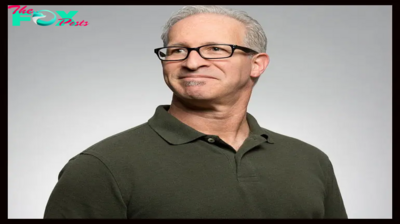
 Entertainment4h ago
Entertainment4h agoSuggestions for delivering a POWERFUL OPENING.
-
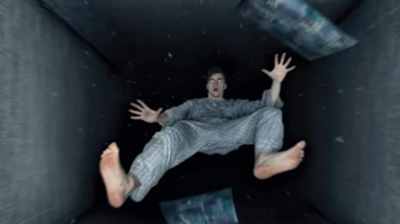
 Entertainment4h ago
Entertainment4h agoAmerica On CoffeeWeŌĆÖre simply inviting you to take a timeout into the rhythmic ambiance of our breakfast, brunch and/or espresso picks. WeŌĆÖre completely happy everytime you cease by.BAD DREAMS ŌĆō TEDDY SWIMS
-
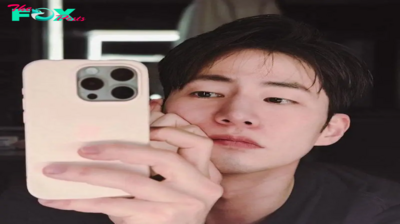
 Entertainment10h ago
Entertainment10h agoRemembering Song Jae-rim: A Look at His Best Movies and K-Drama Performances
-

 Entertainment20h ago
Entertainment20h agoAmerica On CoffeeWeŌĆÖre simply inviting you to take a timeout into the rhythmic ambiance of our breakfast, brunch and/or espresso alternatives. WeŌĆÖre pleased everytime you cease by.SELF CONTROL
-

 Entertainment22h ago
Entertainment22h agoOrange County Choppers Is Ready For Its Big Comeback
-
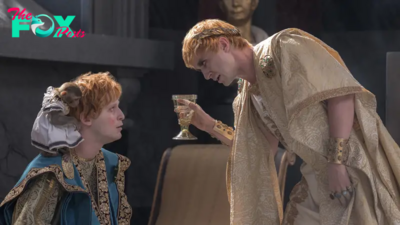
 Entertainment1d ago
Entertainment1d agoThe Real Story of Geta and Caracalla, the Roman Brother Emperors in Gladiator II
-
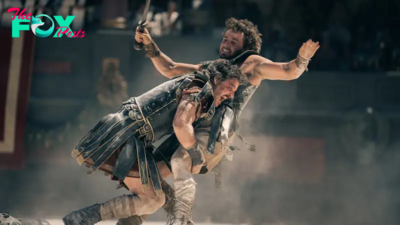
 Entertainment1d ago
Entertainment1d agoWhat Gladiator II Gets Right and Wrong About Real Fights in the Colosseum
